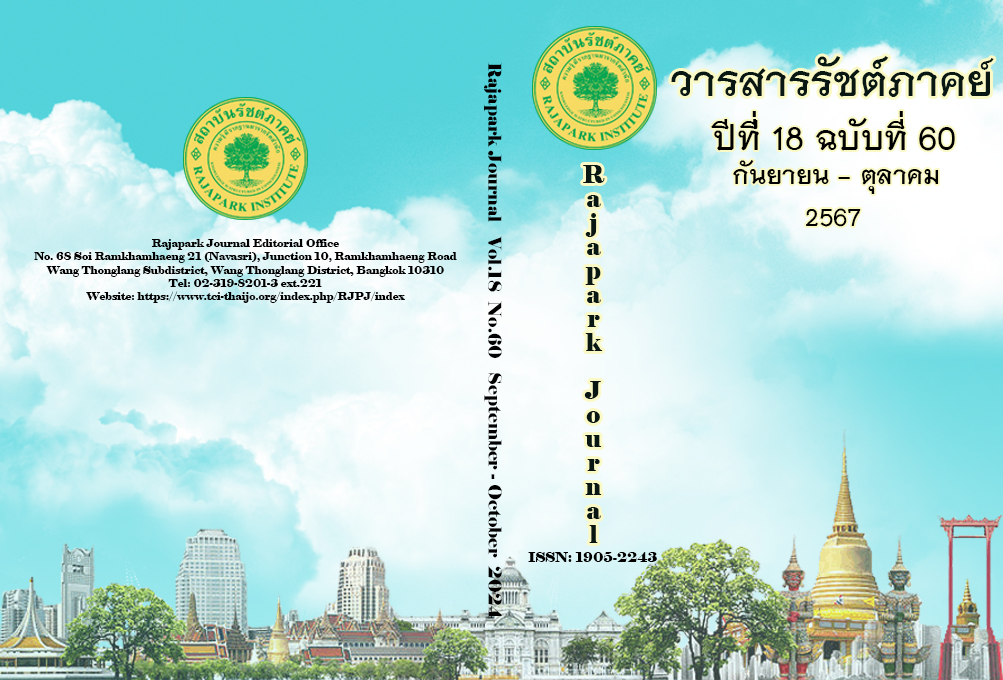Exploring Motion Graphics and Humor Concepts for Effective Art and Design Education in Higher Education
Main Article Content
Abstract
This qualitative research aimed to 1) identify and analyze appropriate motion graphics for instructional media for higher education in art and design courses, and 2) investigate and analyze suitable humor concepts for motion graphics used as instructional media in art and design courses. The research method involved a sample of 187 outstanding motion graphics from the TED-Ed platform in both the Arts and Design categories. Data were collected from three sets of experts using in-depth interviews and the Delphi technique. The research instruments were validated by three experts. The research results were: 1) 59 (out of 187) motion graphics were selected for instructional media in art and design courses, 2) 20 (out of 59) motion graphics with humor were selected, 3) 16 types of the Humor Concept were identified for analyzing motion graphics in this study, 4) The Narrative Theory was identified as the appropriate theoretical framework for analyzing motion graphics, 5) The suitable types of the Humor Concept for motion graphics in higher education were identified such as Bizarre, and 6) the use of the Humor Concept based on the Narrative Theory was identified. These research findings can be effectively applied to motion graphics for instructional media in higher education.
Article Details

This work is licensed under a Creative Commons Attribution-NonCommercial-NoDerivatives 4.0 International License.
Views and opinions appearing in the Journal it is the responsibility of the author of the article, and does not constitute the view and responsibility of the editorial team.
References
Beiman, N. (2007). Prepare to board! creating story and characters for animated features and shorts. Routledge. https://doi.org/10.4324/9780080514673
Bunkaew, T., & Chermarnchonlamark, C. (2023, August 19). Storytelling strategies and life skills of Thai comedians [Conference presentation]. The 18th Educational Research Presentation Conference, Rangsit University, Bangkok, Thailand.
Cheevawiwat, N. (2023, January 23). ‘Both laugh and remember’ the benefits of humor in the classroom. The Potential. https://thepotential.org/knowledge/laughter-and-learning/
Damjab, W. (2022). Designing animation media to develop teaching and learning. Journal of Sripatum Interdisciplinary Studies Chonburi, 9(1), 2-3.
Fanchien, N. (2021). Problems occurring in online learning among Thai children during the COVID-19 Outbreak. Trueplookpanya.
https://www.trueplookpanya.com/education/content/89915
Jirakasem, J. (2023). Get to know ‘teaching media’: What are teaching media and how many types are there?. Twinkl. https://www.twinkl.co.th/blog/teaching-resources-thai
Limvong, T., & Saengrit, Y. (2019). Flipped classroom: New learning for 21st century skills. Mahidol R2R e-Journal, 6(2), 10-17.
Panthakerngamorn, T. (2016). Humor in documentary writing: Creative analysis. Chulalongkorn University.
Royal Institute. (2011). Dictionary of the Royal Institute of Thailand, B.E. 2554. Nanmee Books.
Saranukromthai. (2024, January 1). Thai culture and heritage. https://saranukromthai.or.th/sub/book/book.php?book=38&chap=3&page=t38-3-infodetail01.html
Schmidt, S. R. (2002). The humour effect: Differential processing and privileged retrieval. Memory, 10(2), 127-138.
TED-Ed. (n.d.). About TED-Ed. https://ed.ted.com/about
Thongtieng, N. (2020). Connotations in humor through Khai-Hua-Roa magazine[Master's thesis, Chiang Mai University]. CMU Intellectual Repository. http://cmuir.cmu.ac.th/jspui/handle/6653943832/69729
Wanzer, M. B., & Frymier, A. B. (1999). The relationship between student perceptions of instructor humor and students’ reports of learning. Communication Education, 48(1), 48-62.
Ziv, A. (1988). Teaching and learning with humor: Experiment and replication. The Journal of Experimental Education, 57(1), 5-15.


